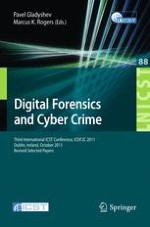This book contains a selection of thoroughly refereed and revised papers from the Third International ICST Conference on Digital Forensics and Cyber Crime, ICDF2C 2011, held October 26-28 in Dublin, Ireland. The field of digital forensics is becoming increasingly important for law enforcement, network security, and information assurance. It is a multidisciplinary area that encompasses a number of fields, including law, computer science, finance, networking, data mining, and criminal justice. The 24 papers in this volume cover a variety of topics ranging from tactics of cyber crime investigations to digital forensic education, network forensics, and the use of formal methods in digital investigations. There is a large section addressing forensics of mobile digital devices.
